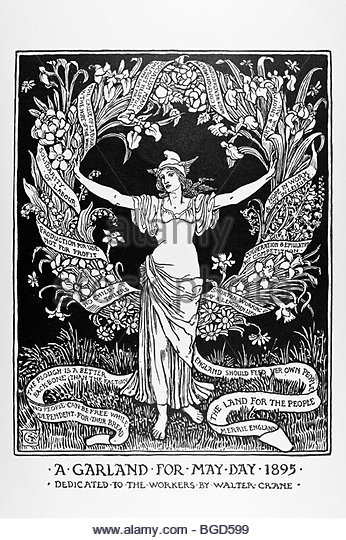Alfred Ireson (b. 1856): Fun and Festivities
What is it that constitutes the fun amongst the working-classes, when daily life seemed to bring much toil and graft? Were pleasures hard to come by? Did they see much of them?
Born into a family of Peterborough’s countryside, many of Alf’s happy memories as a child revolve around the seasonal festivities that were celebrated, as ‘the country gathered the idea of a natural way of life: of peace, innocence, and simple virtue’ (Williams, 1975, 9). Harvest time festivities arrived as solace from the ‘Hungry Sixties’ (10) poverty-stricken days, in which Alf described village life as ‘a time of trial and difficulty…the agricultural works had long hours, the pay barely enough to keep body and soul together’ (9). August and September brought ‘the gathering of the earth’s precious fruit’ (10), much to the delight of the village children. Harvest brought contentment of the year’s fruitful labour, with gleaning – the age-old custom of collecting leftover crops from farmers’ fields after they have been commercially harvested – creating ‘excitement of an early breakfast!’ (12) as happy mothers paced their baskets full of food, gossiping amongst themselves as their boys and girls ‘were happy as the birds, enjoying the fun’ (13). Often during harvest season, a family ‘would glean sufficient wheat and barley to feed the family for months’ (15). Although a sad thought for those that had little the rest of the year; what a celebration this truly is! How pleasing to finally take home more food than has been possible the whole year through, with the meeting of family, friends and neighbours saw the year’s hard work pay off and fun ensue accordingly. Indeed, the pleasures of working-class country life seem far humbler and guiltless than amongst the gin-palaces that people flocked to for fun in the cities.

May Day. The ancient spring festival that Alf remembers, derives from pagan Anglo-Saxon customs, which came to include Morris dancing, revelry at village fetes, the crowning of a May Queen and dancing around a maypole. Traditionally a day of festivities celebrating springtime’s fertility amongst agricultural towns and villages, it came as a day of rest to farm labourers who had completed their seeding usually by May 1st. Huge preparations were made over night for May Day, Alf recalls, with the next morning filled with the creation of floral garlands by the mothers and children, as they all sung ‘their sweet May Day songs’ (17). Although mild escapism occurred from the celebrations, money was never far from the community’s minds, as ‘what few coppers they collected, were spent on the children’ (17). Nonetheless, the scene was filled with ‘sunshine and pure air’, with Alf believing it was ‘a real love of the beautiful, the desire to cultivate the best’ (17). Find out more about the traditions and customs of May Day in England .

All of these joyous occasions of Alf’s village were marked the village Church bells; to the children, they were called ‘Joy Bells’. At Christmas time, ‘the beautiful old bells ring out the glad tidings of the festive season’ (15), as well as to ‘ring the Old Year out and the New Year in’ (16) and at times of marriage, ‘bringing cheer and happiness into the home’ (15). Even as the last load of corn was brought home, those ‘Joy Bells’ of harvest would ring, with them signifying the ultimate focal point of the neighbourhood, lending a hand to those who wish to hear ‘the joyous notes of God’s goodness’, Alf declares. Alf’s memoir reveals the most comforting aspect of a working-class country life stands with community. It seems without an overwhelming sense of collectiveness and pride amongst family and friends, life would be far more treacherous to bare.

Like other elements of his memoir, Alf has decided to recall the fun that took place as a child rather than any celebratory events of his adulthood. However, I do not dispute that Alf had fun or celebrations as a grown man, after all, Alf does remark in 1930 that ‘Goodness hath followed us all the days of our life!’ (93) It seems, as with anyone, fun and celebration comes as an overwhelming part of childhoods carefree position. At the age of 74, the ‘reminiscences’ relayed here may also be ‘memories of a way of life that is changing or has already ceased to be’ (Gagnier, 1987, 348); nostalgia laced with an underlying sadness, or maybe he’s exhibiting a ‘relie(f) not to have to participate in the new ways of the future’ (Gagnier, 1987, 350). Nonetheless, these times prove to be a comfort of the simple pleasures that humans can share. For a working-class man, Alf used his later years to work, earn, and support his family as well as follow the great sense of responsibility that he had to his faith and work.
Works Cited:
Ireson, Alfred. ‘Reminiscences’, TS, pp.175 (c.35,000 words). Extract in J. Burnett (ed.), Destiny Obscure. Autobiographies of childhood, education and family from the 1820s to the 1920s (Allen Lane, London, 1982), pp.82-8. Brunel University Library.
Gagnier, Regenia. 30.3 (1987): 335-363
Williams, Raymond. The Country and the City. St Albans: Granada Publishing Limited, 1975.
Images Cited:
Wikipedia: The Gleaners. Web. Accessed 16th January.https://en.wikipedia.org/wiki/The_Gleaners#/media/File:Jean-Fran%C3%A7ois_Millet_-_Gleaners_-_Google_Art_Project_2.jpg
It’s About Time: May 20C – Still Dancing Around the Maypole. Web. Accessed 16th January 2016. http://bjws.blogspot.co.uk/2015_05_01_archive.html
www.Alamy.com. Web. Accessed 16th January 2016. http://www.alamy.com/stock-photo/1895-1890s-1800s.html

Leave a Reply